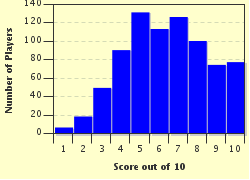Quiz Answer Key and Fun Facts
1. Which of the following is an example of an asset?
2. If a single owner manages and owns a business, what do you call this type of organization (in North America)?
3. What is an expense that a business has incurred but has not yet paid?
4. What is a seller's request for payment from a sale?
5. Which of the following does not have a debit balance?
6. If total assets equal 3 times liabilities, and owner's equity is $40,000, what are total assets?
7. A company in North America purchases merchandise on July 1 for $1,600 with terms 1/10, n/30. If it pays for the merchandise on July 8, what should the entry to record the payment look like?
8. In North America, which of the following accounts is not a contra account?
9. If the beginning balance in an owner's equity was $25, the ending balance is $67, net income for the month was $106, and there were no investments by the owner, how much did the owner withdraw for the month?
10. What does net income equal?
Source: Author
trevor1968
This quiz was reviewed by FunTrivia editor
gtho4 before going online.
Any errors found in FunTrivia content are routinely corrected through our feedback system.

